Disclosure: Meeple Mountain received a free copy of this product in exchange for an honest, unbiased review. This review is not intended to be an endorsement.
Twenty-one long years ago, I sat down in an otherwise empty movie theater to watch a movie that I knew virtually nothing about.
At the time, I was in my early 20s, living with my parents, no bills to speak of, with money burning a hole in my pocket. Going to the movies was my preferred method of resolving that predicament. I went so much, in fact, that I’d seen virtually everything that was out. It had gotten to the point where I’d just go and watch whatever was on the marquee that I hadn’t seen yet without doing any kind of research first.
Thus it was that I saw The Royal Tenenbaums for the first time. By the time the opening credits had finished, my eyes were tearing up. It was one of the most perfect things I had ever experienced and I was awestruck by its majesty. The color palette. The costumes. The location. The acting. The story. The narration. The incredible cast of ensemble actors. The music selection. The tone of the entire film was set in those few brief minutes. I was hooked. The Royal Tenenbaums is a testament to what humankind is capable of when all the circumstances are just right.
You can go your entire life and never experience such a moment. When you finally do, rarely do you ever get a second opportunity. Perfection is an elusive thing. It’s the center of the Venn diagram where opportunity meets talent meets skill. The Royal Tenenbaums, for me, was perfection. It showed that Wes Anderson was more than just a talented director. He was a visionary with a gift for imparting that vision to other people and utilizing their skill sets to produce the best product possible.
This is what it was like playing Iki for the first time, a game I knew virtually nothing about before sitting down to play it. Even as I liberated the various pieces from their cardboard prison, I could feel it. I was in the presence of greatness.
Visually, the game is a feast for the eyes. Before you’ve even opened the box, you know what this game is about. We find ourselves standing behind a nameless individual, midstep, strolling through a bustling marketplace. Merchants vie for customers’ attention from every market stall. There is a bubble blower. There is a kite maker. There even appears to be an honest-to-goodness sign spinner standing on a nearby rooftop. The color palette, the way the customers are dressed, the topknot on our character’s head, lend no doubt to where this is all taking place: Japan. And there is no doubt when it is taking place either. The lack of modern day conveniences and attire puts us firmly in the range between the mid-1600s and the late-1800s. David Sitbon’s illustration is gorgeous and his work extends beyond just the confines of the box top. It is ingrained in every corner of the game and Iki is all the better for it.

Before I’d even learned to play, I could already feel myself being won over. Such is Iki’s table presence. Its visual appeal is a siren’s song and I am a mere sailor, powerless to resist its allure.
Once I finally got the game to the table, I became even more enamored. At first glance, Iki didn’t seem much different from a hundred other games I’d experienced before. But that feeling of sameness soon passed as the game’s intricacies revealed themselves. Subtly complex, like the lines of a well-written haiku, Iki’s inherent beauty becomes apparent the longer you contemplate it.
Here’s What You Need To Know
In Iki, the players find themselves in the bustling marketplace of the Nihonbashi area of Edo, Japan. Lining the main avenue, the various merchants hawk their wares from the comfort of their Nagayas (houses). These merchants are player controlled, as are the Oyakata who travel the thoroughfare interacting with them.
Like many games of its type, Iki is a game of victory points. Victory points can be accrued in many ways: the product of certain merchants, retiring merchants for set collection bonuses at the end of the game, having matching merchants of certain types occupying the same nagaya during end-of-season scoring, and collecting fish, tobacco pouches, and pipes (just to name a few).
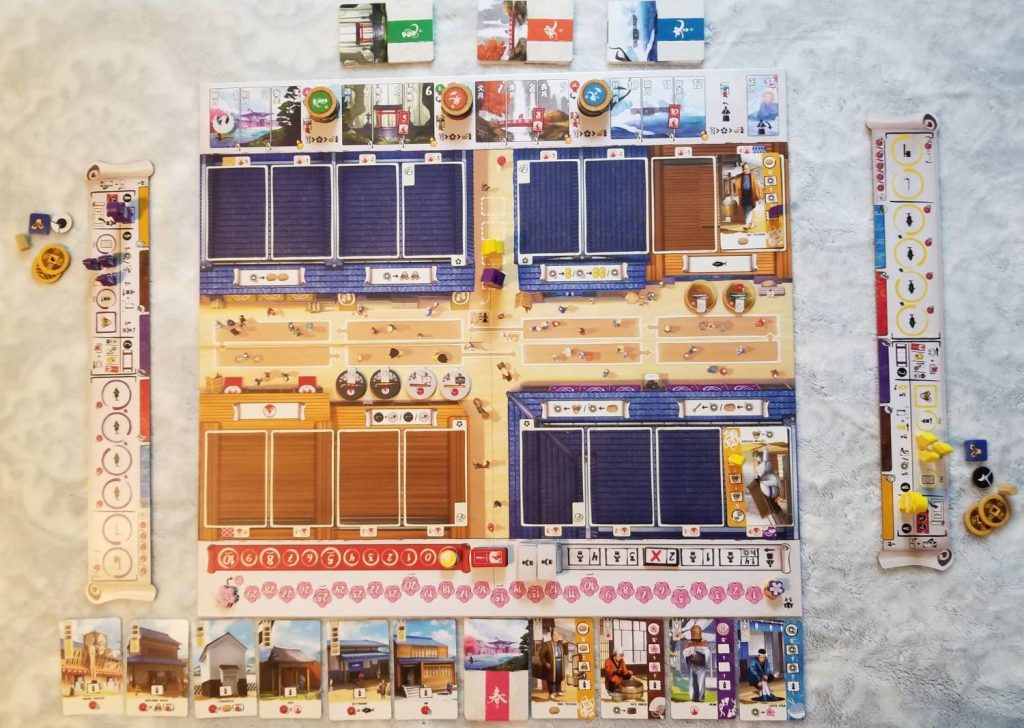
Iki is played over four seasons which are divided into three rounds each. At the start of a round, players vie for turn order by placing their Ikizama meeples onto the turn order track. This is tricky, though, because the earlier you are in turn order, the more restricted your Oyakata’s movement around the marketplace rondel becomes. Your Oyakata can only do business with the shops next to the space on which it sits. So, getting your movement right is tantamount to success. This also gives the players a path to denying their opponents access to things that they may desperately need.
Then, each player takes their turn following the turn order. On their turn, they first have the option to hire a merchant from a lineup of randomized merchant cards. If they hire one, they place the card into an empty market stall and place one of their Kobun meeples on its bottomost space to show ownership of the card. As other players interact with their merchants over the course of the game, these Kobun meeples will move up the track on the card. Leveling up merchants in this way provides greater rewards during the end-of-season scoring.
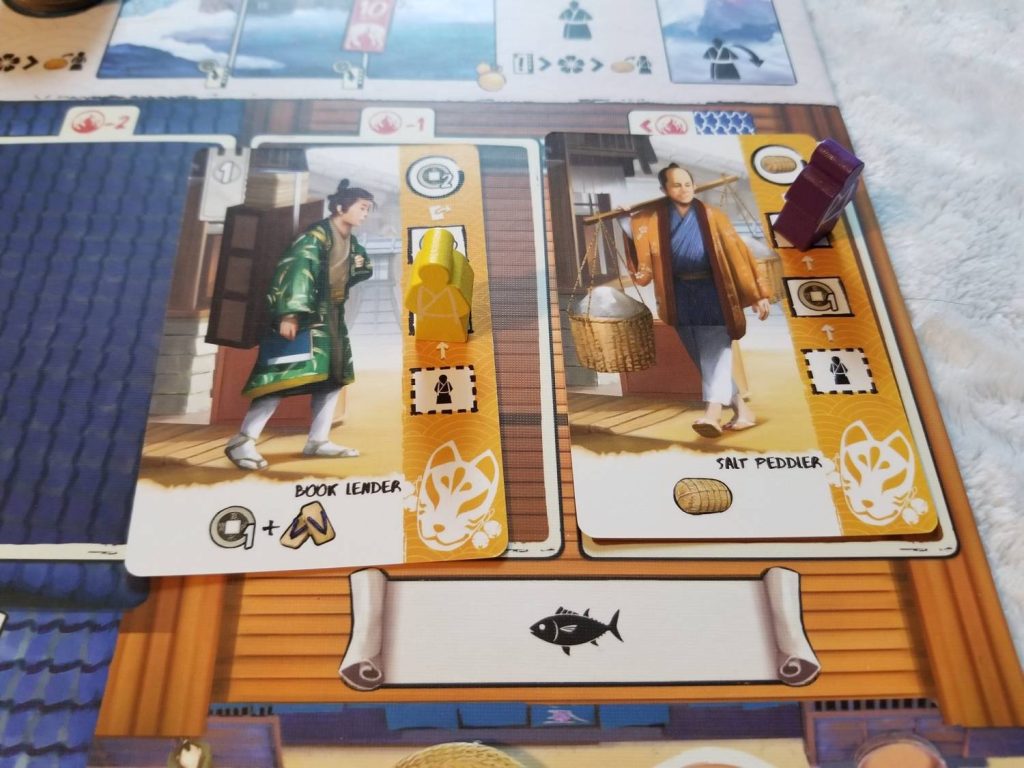
After hiring a merchant (or taking some money if they opt not to), the players then move their Oyakata around the marketplace a number of spaces equal to their place in the turn order. This movement can be extended by expending any sandals they may have collected during previous merchant interactions. Then they conduct business with: the space printed on the board, one of the merchant cards that straddle the space the Oyakata occupies, or just one of those, or neither of them (a player is never forced to take an action).
Once all players have taken their turns, the round marker proceeds to the next space. If the game is still within the same season, new merchant cards are introduced. If the season has come to an end, though, an end-of-season scoring occurs. First, all merchants produce, for their owners, whatever is on the next space in front of their Kobun meeples. Secondly, players may earn harmony bonuses if there are matching types of merchants in the various Nagayas. The total number of matching types is multiplied by the total of each person’s Kobuns that are on those cards to determine those players’ scores.
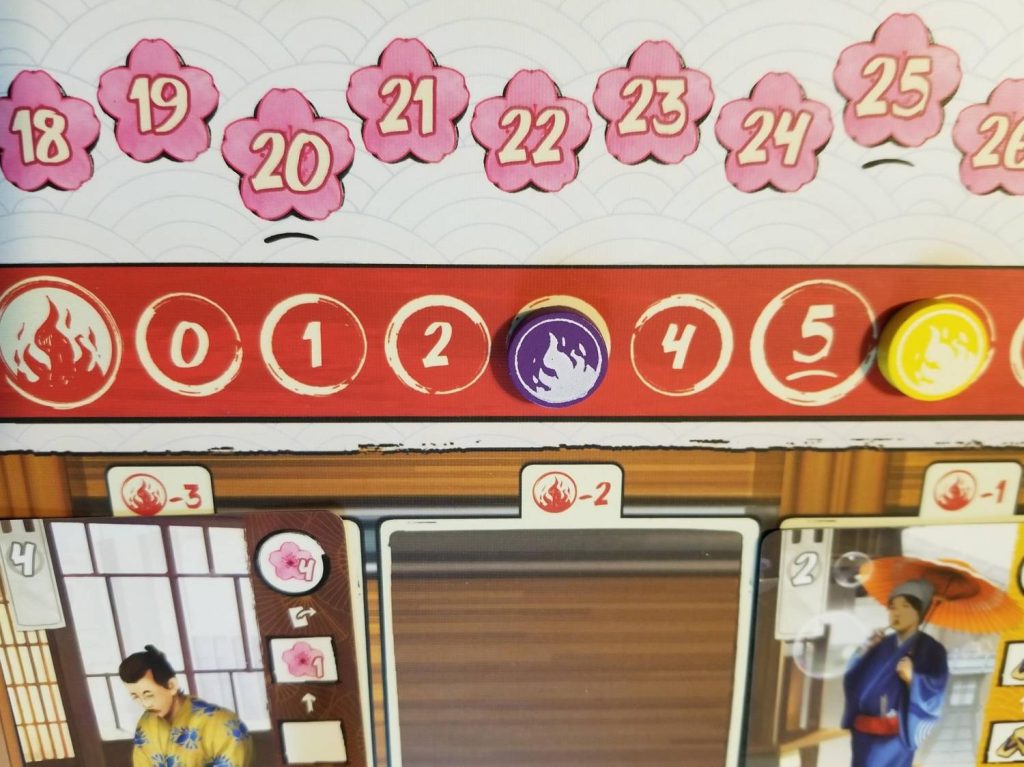
Next, the players must pay one rice for every Kobun meeple they have in play. If for whatever reason they cannot, they lose a Kobun and its associated card for every rice they cannot pay. Finally, a season reset happens. Everything from the current season that has not been claimed is returned to the box and the components for a new season are introduced. The game ends after the last season, and a subsequent “New Year’s” turn. The player with the highest score wins.
Thoughts
If you’ve made it this far, then you can probably guess how I feel about this game.
I love it.
It’s a stellar game: gorgeous visual appeal with intense gameplay in all the right ways. There are a lot of opportunities for player interaction…or not. And that’s part of the beauty of it. Utilizing other people’s merchants helps those players even as their actions help you. Knowing this largely affects where you place your own merchants and it also forces you to choose between whether or not it’s worth it to interact with someone else’s. It’s these kinds of decision making moments that aren’t obvious right away. Playing Iki is more than just an enjoyable way to pass some time. It’s a journey of discovery as you peel away the game’s layers one by one and discover the unseen pleasures that hide beneath.
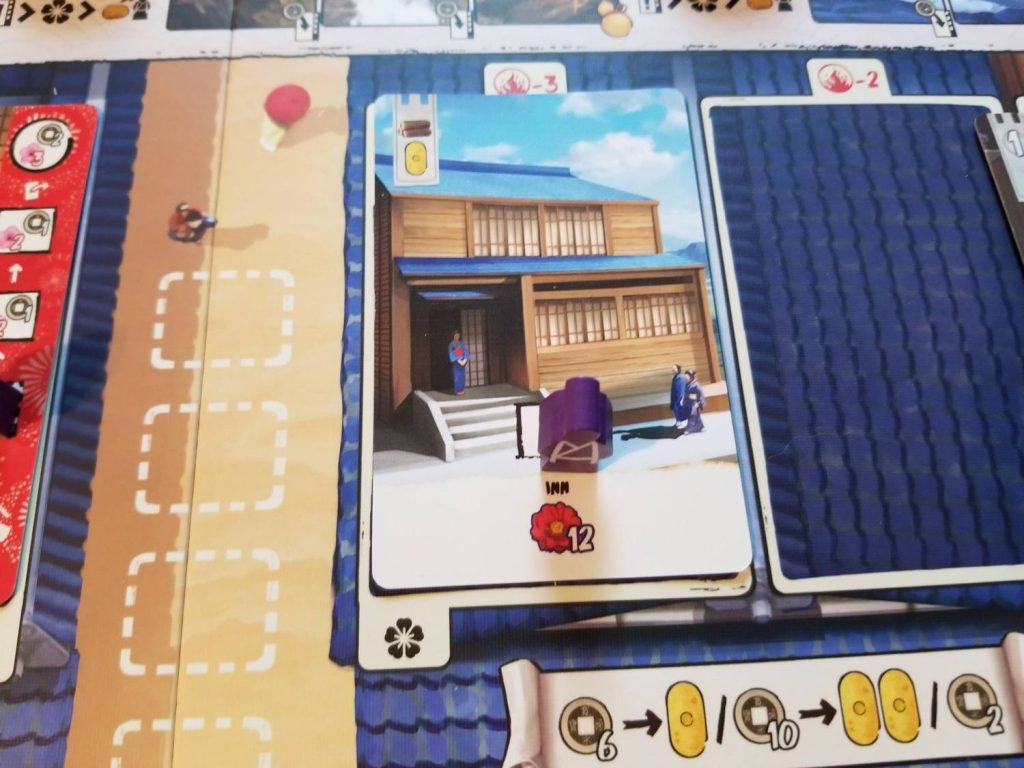
I love this game so much, in fact, that it’s hard to find anything negative to say about Iki. The only thing that I feel could be better is the rule book. While it’s laid out in a way that makes sense, it still leaves a lot to be desired. There were a few times that questions arose mid-game and finding the answers to those questions was not the easiest thing to do. The turns go by so rapidly that it would often be my turn again before I’d found the answer that I was looking for. But, at least the answers were there even if we did have to hunt for them and even if the hunting occasionally caused the game’s pacing to lag.
Also, there is an Appendix at the back of the rule book, broken up by season, that gives a detailed overview of every Character card, Tobacco Pipe, and Tobacco Pouch in the game. This Appendix got used A LOT. It is a mystery to me why this wasn’t included as something that was apart from the rule book so that it could easily be passed around the table.
And that’s it. Aside from those negligible gripes about the rule book, I have nothing but praise for this amazing game. If you’ve already played Iki, then you no doubt understand just why I hold it in such esteem. And if you haven’t played it, what are you waiting for?


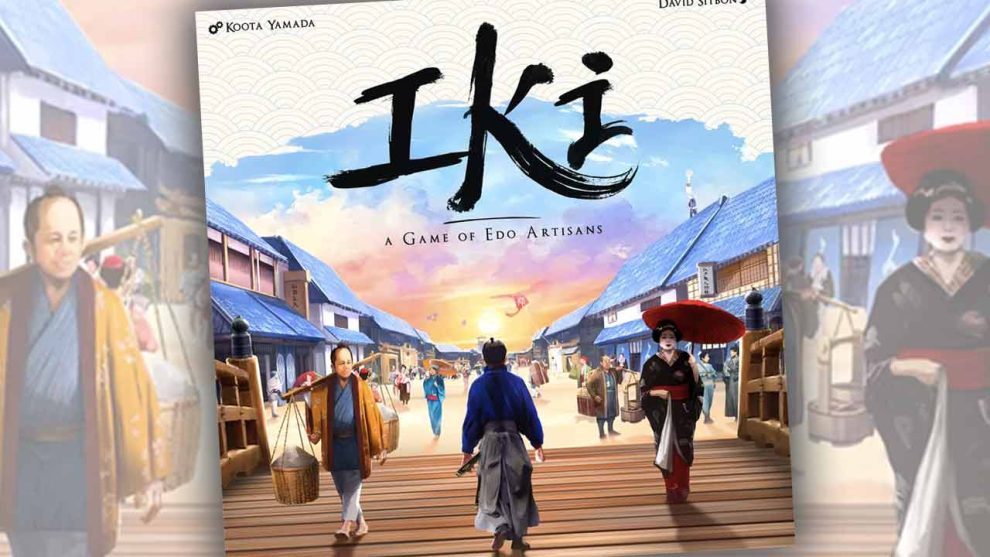

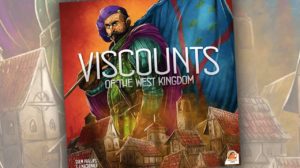







Add Comment